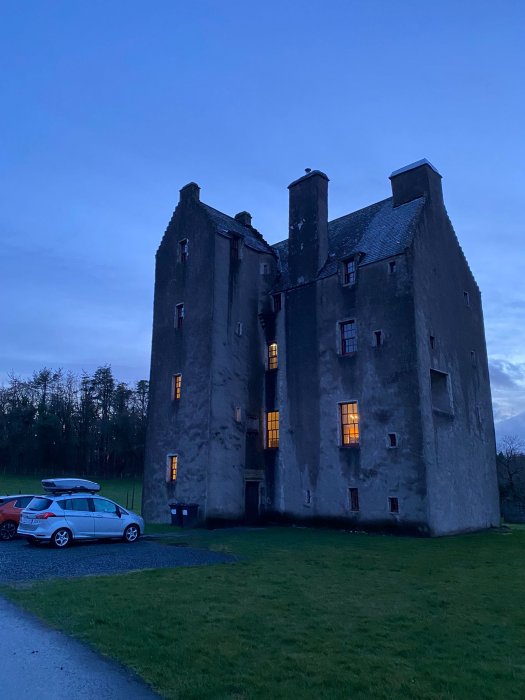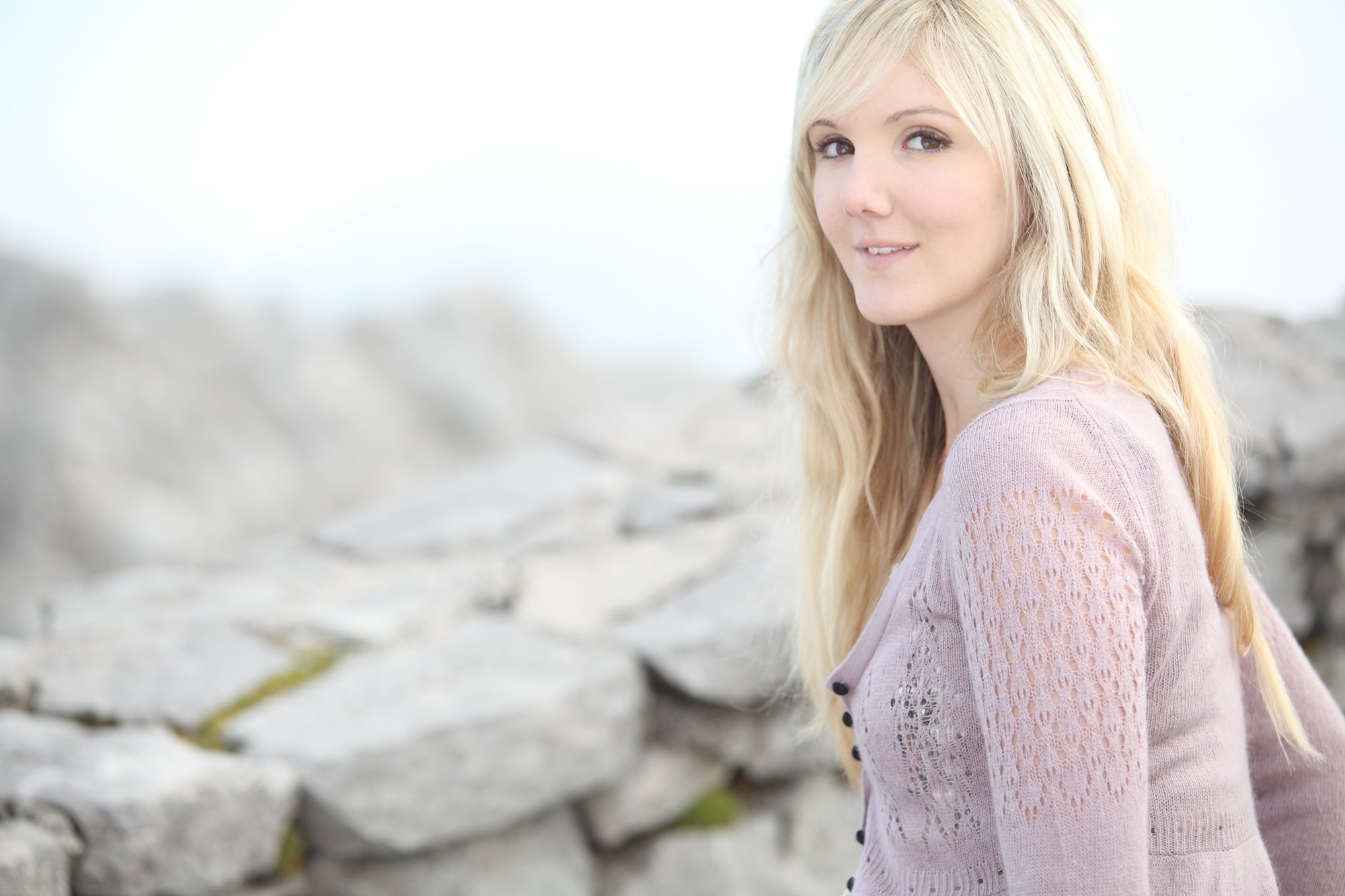It’s cold and fresh in the bedroom, with a chill that touches your face like when you open a fridge door, and it makes the skin on my hands tingle. It’s charming, because along with my face and neck, my hands are the only part of me that’s exposed; the rest of me is tucked as far as I can get under the thick covers while still handling a pencil and paper. It’s such a good excuse to hunker down. The wind is whistling above the beamed ceiling and rumbling around the outer walls with a hum that sounds like a tumble dryer. But I feel safe in this castle that has stood strong here since 1590. And actually, the bedroom is the only part of it that’s cold. Unexpectedly, the rest of the building is warmer than many other historic properties I’ve known.
We’re in Castle of Park for the weekend, a Jacobite tower house in Glen Luce, the “valley of the light”, in Dumfries and Galloway in southern Scotland. It is open for holiday stays thanks to the Landmark Trust charity and its tireless work preserving iconic buildings that may otherwise be lost to time. ‘I capture the castle’ by Dodie Smith is my all-time favourite novel, and this place plays into that same sense of charm. But its carefully restored not dilapidated, like Smith’s creation, and makes for a luxury getaway.
The castle is entered via a huge wooden door that opens onto a spiral staircase that in turn leads to the four floors, each one arranged like an apartment. A back passage of stairs at the other end returns down to the kitchen and hall, where the stone walls are thick and whitewashed, and hewn with great stone hearths and shelves. There are gilded-framed portraits, Persian rugs, dark wood furniture and jewel-toned sofas. Above the front door an inscription reads:
“Blessit be the name of the Lord
this verk was begun on the first day
of March
1590 be Thomas Hay of park and
Ionet Makdovel his spous”
Work began on the building in 1590 for Thomas Hay of Park on land formerly belonging to nearby Glenluce Abbey that was acquired by the Earl of Casillis (Thomas Hay was his protégé. The Earl paid for the care of the monks and the upkeep of their abbey, and in return were granted the lands. Park can’t be taken as we now understand it – then it referred to an enclosed forest for hunting. In Scotland, the term often just meant a field. A home for lairds and ladies, the tower house remained prominent through the centuries. It was improved in the 18th century, but abandoned by around 1830. It was later inhabited by farmers and was derelict by 1950 – until the Landmark Trust came to its rescue.
The building is never silent; it likes to engage you in conversation. There are sounds of creaking and humming as the heating and pipes chatter. It's such an evocative place that the sight of cars parked at the neighbouring farm is almost startling. Apart from the farm, there isn’t much manmade in the landscape, which encompasses folds of green hills and woodland that roll towards the more mountainous northern part of the region and south to the sea. Out of sight in the woodland is an XX viaduct that you pass as you drive to the castle. Strike out east and the track brings you to a riverside path that plunges between banks of snowdrops and emerges in the Bay of Luce. Such light! The milky tones of the early spring sky, huge above the rolling and swelling and twinkling sea. As we make our way towards the beach, the gravel that crunches under the soles of our shoes isn’t stone but broken shells.
And so we spend days like these, wandering the nearby surroundings, basking in the light – in the turquoise harbour skirted by colourful cottages that makes up Portpatrick, with its views to the Mull of Galloway, the Isle of Man and Ireland. Or in Wigtown, with its rows of old-world bookshops and natural harbour bathed in almost effervescent light. Here stands a stone pillar marking the spot where in the 1600s, two young female Covenanters were tied to the stake and drowned as the tide rolled in. But that’s too bleak and not something I want to think too hard on as I curl up beside the fire in the castle’s great hall at the end of each day.
When night falls, I might be spooked if I were that way minded – which I sometimes am. When I climb the unheated spiral back stairs to our floor after dark and cross the unlit sitting room with the portraits looking down on me, and then enter our dark corridor, I imagine I can hear the footsteps of lairds and ladies past. I’m not sure I’d be surprised if someone in costume drifted past. It’s just that kind of place.
Find out more






